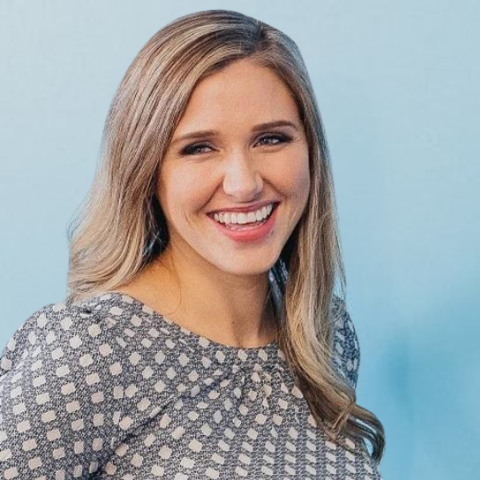Business Intelligence (BI) tools can seem like the magic solution for driving data-driven decisions, but they’re not without their flaws. As a CRO or RevOps leader, you might find that the very tools meant to empower your team can sometimes introduce new challenges, from data overload to steep learning curves.
If you’re scaling your business, it’s critical to understand where BI can fall short—before it slows down your growth. In this article, we'll cover the disadvantages of business intelligence that might catch you off guard, and how to navigate around them.
What Is Business Intelligence (BI)?
Business intelligence (BI) provides tools and processes that enable companies to gather, analyze, and organize their large data sets. This includes tasks like data mining and performance assessment to enhance business understanding.
For many SaaS businesses, BI is essential. It combines data analytics, visualization, and infrastructure, helping leaders make informed strategic decisions for smoother business operations.
BI aims to simplify complex data. It presents this data in easy-to-read reports and dashboards for detailed analysis and trend identification. With customizable views, you can quickly assess business growth and explore specific data points when necessary.
What Are the Benefits Of Business Intelligence?
BI lays the groundwork for better business and operations possibilities. Executives sitting in the top chairs are recognizing the value and building the skills needed to convert this tool into a sustainable strategic edge in the following ways:
- Thanks to the insights, they're seeing better results in decision-making, operational efficiency, and customer engagement.
- They're ramping up their data skills, especially the finance teams, prepping them to get even more from their data down the road.
- They're building a treasure trove of data that'll be their goldmine for years, tying together information from all corners for a complete picture.
That said, here are a few benefits of business intelligence that help Chief Revenue Officers, such as yourself, make long-term strategic decisions and improve daily operations.
Better budget allocation
With the evolution and expansion of the digital landscape, understanding online behaviors is crucial to discerning the effectiveness of your marketing strategies.
Good business intelligence software will allow your team to seamlessly merge data from various platforms like enterprise resource planning (ERP), customer relationship management (CRM), digital marketing, social media, and web analytics.
Analyzing this consolidated data will give you critical insights into what’s working and what can be improved. Objective insights and reports are the strongest indicators of where you should allocate your marketing budget efficiently.
Since the majority of the conversations are happening behind the screen, tracking online interactions is key to grasping real-world customer decisions, ensuring you get the maximum ROI from your marketing dollars.
Spot opportunities and problems early
Real-time accurate data can help you identify golden chances. Notice an unexpected boost in sales for a specific product? Perhaps an influencer gave your product a shoutout. Or you may identify a specific day of the week, month, or year when sales go up. That's your cue to bring in marketing and amplify the message.
But it’s not just about opportunities. The old saying prevention is better than cure applies to business too. Assume your company targets a 40% gross margin on all sales. But, with a real-time BI dashboard, you spot a slew of orders with margins under 10%. Without this view of your KPIs, a major pricing mistake on a top product might have slipped through. Think of the potential losses you could avoid because you detected an issue and fixed it immediately.
Many anomalies often get lost amidst vast data. Detecting these deviations in near-real time allows business leaders to ward off challenges and grab hold of new possibilities.
Expedite operations
Sometimes, management knows there's an issue but lacks a clear picture of its nature. For example, during supply-chain hiccups, BI reports can offer a detailed understanding of what’s happening on the ground.
Armed with the right data, a supply chain manager can pinpoint the problem's root and find viable alternatives. Using data-driven insights, they can determine the best solutions.
In a world where businesses grapple with supply-chain challenges, precise and transparent information becomes pivotal in addressing concerns and improving operations.
Prepares for change
With the ever-changing business landscape, management needs to stay alert and ready to adjust to new developments.
These changes frequently lead to many questions from senior executives. For example, in 2020 when COVID shut down the world, those in the food and beverage sector wondered: “what happens if our restaurant sales decrease by 90%?” or “how have recent changes impacted sales in grocery stores?”
A good business intelligence platform is known for its ability to answer such specific questions. The questioning aspect of BI is perfectly suited to tackle and respond to unique queries. During unpredictable moments, fast and accurate information can be a saving grace.
Breaks down data silos
Seeing the bigger picture backed by comprehensive data is crucial for sound business decisions. The BI team combines data from different sources to tell a complete story.
When the CRO collaborates with BI, it reshapes their department's perspective on data use, recognizing the merit of combining both financial and non-financial data.
Such synergy can inspire the broader company, encouraging teams to think beyond their departmental data silos and look at the big picture for informed decision-making. Instead of managing scattered data sources, they can all be synchronized, working seamlessly together.
Lacking a strong BI approach to consolidate data would lead to missing out on its full potential. For instance, you might be privy to website traffic stats from Google Analytics but clueless about how to use it to refine sales strategies. This oversight could mean lost opportunities.
Top 5 Disadvantages Of Business Intelligence
But alas, with pros there are cons, and so with the benefits of business intelligence comes challenges and disadvantages worth knowing in advance. Here are the top five:
1. High initial costs
The purchase and overall setup of some of the best business intelligence software can initially seem like a major investment, however, its benefits are quickly realized.
Data-driven decisions increase accuracy and reliability. By basing decisions on concrete data rather than intuition or anecdotal evidence, businesses can better forecast outcomes and achieve consistent and positive results. That said, for smaller businesses, the upfront cost might appear daunting, but there are alternatives.
Solution: BI forces you to look at the big picture. Consider looking beyond the immediate expense and factor in the long-term savings from increased efficiency, streamlined operations, and data-driven revenue growth. If affording the software upfront is challenging, consider a self-service BI tool, which often sidesteps the high costs of IT support. Additionally, tailor your choice to only the features you need, skipping pricier, more comprehensive models.
-

Zoho Analytics
Visit WebsiteThis is an aggregated rating for this tool including ratings from Crozdesk users and ratings from other sites.4.2 -

Domo
Visit WebsiteThis is an aggregated rating for this tool including ratings from Crozdesk users and ratings from other sites.4.4 -

MicroStrategy
Visit WebsiteThis is an aggregated rating for this tool including ratings from Crozdesk users and ratings from other sites.4.2
2. Gap in data context and analysis
BI tools and reports offer valuable insights through data analysis. But they don't give you clear answers. Most BI software sometimes falls short in providing context, leaving teams puzzled. While they can see reports, they don’t know how to interpret them and get useful insights from them.
Solution: One way you can bridge this gap is to lean on data visualization software. These tools offer a clearer picture by visually representing data, making it easier for your team to grasp BI-generated insights. Moreover, through these visual cues, you can more readily spot trends and patterns that might otherwise go unnoticed.
3. Data governance
BI solutions produce vast amounts of data, which, if not managed well, can lead to serious security concerns. Lack of proper data governance can expose organizations to data breaches and other threats.
For example, a SaaS company that sells CRM platforms having access to vast client data could, due to an oversight, inadvertently expose sales figures. A strong data governance framework would prevent such leaks and maintain client trust.
Solution: To mitigate these risks, organizations need to establish a solid data governance framework. This should encompass guidelines for data management, security, and privacy, complemented by routine audits to guarantee compliance.
4. Self-service BI
Self-service BI can offer an affordable solution for businesses, but without proper oversight, it can lead to data disarray and inconsistent outcomes.
For example, the marketing team looking at its analytics tools would attribute a surge in sales to their initiatives. On the other hand, the sales department might attribute the same surge to a recent sales event.
This conflicting interpretation can lead to misguided decisions and wasted resources. Effective BI demands tight data engineering and unbiased interpretation, which might be missed by some self-service users.
Solution: Have BI teams organize data in data warehouses for consistency. With established guidelines on data interpretation, different teams can accurately gauge the impacts of their respective efforts, ensuring aligned and informed decisions. If you’re a small business that can’t afford a BI team, you could consider hiring someone temporarily to help you set up this warehouse.
5. Human bias
BI tools aim for objectivity, yet human biases can influence them, posing challenges for decision-reliant organizations. Each organization faces unique BI limitations due to varying datasets, organizational setups, and IT frameworks. Regular evaluations of BI tools can help pinpoint these constraints and formulate strategies to address them.
Solution: To counteract this, organizations must recognize possible biases in their BI outputs and invest in mechanisms, like automated decision processes and varied data sources, to curb these biases.
Overcoming BI Challenges
Business intelligence software clearly offers numerous benefits and can help you to obtain that competitive advantage, but it also has some limitations. While it's a growing market with proven strengths, its effectiveness hinges heavily on proper implementation.
If you enjoyed this article, don’t forget to subscribe to The RevOps Team newsletter to receive actionable advice from industry leaders directly in your inbox.
Need Help Finding BI Software?
We’ll match you with an advisor who can help you find the right BI software to avoid these pitfalls and scale your business.






